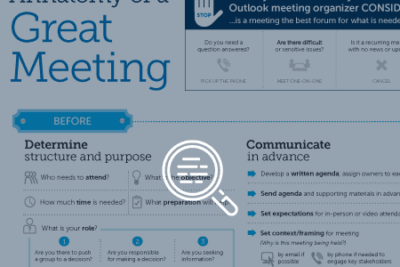Remote Work and Hybrid Workplace Resource Center
The percent and frequency of campus employees working remotely has increased significantly in recent years. As these remote working arrangements may be new to employees and campus constituents, we have compiled some of EAB’s top resources for addressing the challenges and alleviating the pain points common to remote work.
The resource center is organized into the four sections outlined below and is updated with additional tools as they become available.
-
What are the potential benefits of institutionalized remote work?
-
How can institutions create a clear and equitable remote work policy?
-
How can institutions effectively manage and support the remote workforce?
-
How can institutions align administrative office space with remote work?
“We need to start making changes to our office space and technology today. There are some risks—and we should be strategic about the investments we make—but if we don’t rethink our administrative spaces now, we’re setting hybrid work and staff up to fail.”
-Chief Financial Officer, Public Research University in the Southeast
1. What are the potential benefits of institutionalized remote work?
But to realize potential benefits like space reductions, operational savings, improved employee recruitment or retention, and process improvements, institutions will have to undergo careful planning, set reasonable expectations, and establish a leadership-driven vision for remote work.

Strategies to Support Remote Work Cost Savings in Higher Ed
2. How can institutions create a clear and equitable remote work policy?

How universities are planning return-to-work policies and guidelines

4 takeaways for navigating flexible work policies and space utilization in higher ed
3. How can institutions effectively manage and support the remote workforce?

Manager’s Guide to Remote Onboarding for Higher Ed

The anatomy of a great meeting
4. How can institutions align administrative office space with remote work?
While this can lead to increased space efficiencies and reduced costs by sharing or repurposing administrative offices, campus leaders must still ensure their staff have adequate access to individual and collaborative workspaces when they are working on campus.

How higher ed leaders are adapting office space for hybrid work

Adapting university office spaces to support flexible work arrangements

How to Reimagine Office Space to Fit a Hybrid Work Environment

Optimize Office Space on the Post-COVID-19 Campus
How our work impacts partners
“I would like to share this feedback because you should know how helpful the EAB presentation [Untethering the Administrative Workforce] was. I met with several of my colleagues to continue the dialog. I presented to them an overview of an IT 100% remote work program proposal that my team and I put together. Said to them that I am confident the program will be successful and that IT will be able to free up space for institutional repurposing. All this to share that I accomplished what I wanted EAB to kick start for me. You delivered.”
-Jonathan See, CIO, Pepperdine
This resource requires EAB partnership access to view.
Access the resource center
Learn how you can get access to this resource as well as hands-on support from our experts through Strategic Advisory Services.
Learn More